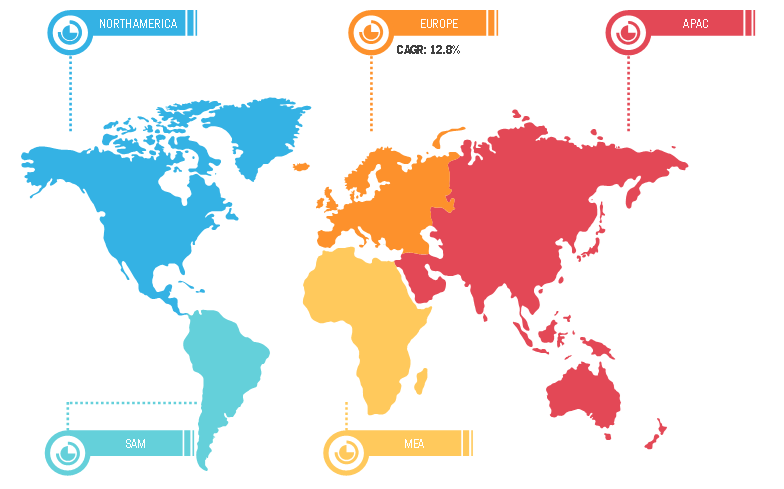Ecological advantages of recovered carbon black to Escalate recovered carbon black Market Growth
According to our latest market study on “Recovered Carbon Black Market Forecast to 2028 – COVID-19 Impact and Global Analysis – by Application (Tire, Non-Tire Rubber, Plastics and Others),” the market is projected to reach US$ 8,760.62 million by 2028 from US$ 4,037.76 million in 2021; it is expected to grow at a CAGR of 11.7% from 2021 to 2028. The report highlights key factors driving the market growth and prominent players along with their developments in the market.
Recovered carbon black is widely preferred in applications such as tire, non-tire rubber, plastics, coatings, and inks due to its excellent natural or bio-based properties. It is used as a reinforcing agent in the production of hoses, conveyor belts, seals, gaskets, geomembranes, rubber sheets, and rubber roofing, among other non-tire rubber applications.
Producing recovered carbon black from waste generated by rubber goods, specifically tires is an ecologically beneficial process. Moreover, the outcome is also finer than virgin carbon black, allowing for better cuts in the finished product. To produce 1 kg of virgin carbon black, ~1.5–2 kg of crude oil is required. Recovering carbon black also entails reusing valuable raw materials, propelling one higher up the recycling hierarchy. Thus, replacing virgin carbon black, produced out of traditional furnace processes, with recovered carbon black considerably reduces carbon footprint. The use of recovered Carbon Black (rCB) alone can reduce the size of carbon footprint by 80%, which is why many large tire manufacturers are trying to use significantly more recovered carbon black. Thus, the environmental advantages associated with recovered carbon black are propelling the market growth.
A few major key players operating in the global recovered carbon black market include Black Bear Carbon B.V.; Bolder Industries; ENRESTEC; Klean Carbon; Radhe Group Of Energy; Scandinavian Enviro Systems AB; SR2O Holdings, LLC; Delta Energy LLC; Pyrolyx AG; and Alpha Carbone.
Impact of COVID-19 Pandemic on Recovered Carbon Black Market
The ongoing pandemic has drastically altered the status of the industrial sector and has negatively impacted the growth of the recovered carbon black market. The implementation of measures to combat the spread of the virus has aggravated the situation and has impacted the growth of several industrial sectors. Industries such as automotive, industrial, oil and gas, chemical, aerospace have been impacted by the sudden distortion in operational efficiencies and disruptions in the value chains attributable to the sudden closure of national and international boundaries. For instance, an article published by ACEA highlighted the severity of the impact of COVID-19 upon the automotive sector. The production and sales of motor vehicles suffered a sudden halt in operation, with sales of car registering a drop by 25% in Europe. This has direct correlation with the demand for recovered carbon black.0 Moreover, the recovered carbon black market is still in the nascent stage, with manufacturers developing products with different grades and technological advancements.
Global Recovered Carbon Black Market Breakdown – by Region

Recovered Carbon Black Market Drivers and Trends by 2028
Download Free Sample
Recovered Carbon Black Market Forecast to 2028 - COVID-19 Impact and Global Analysis By Application (Tire, Non-Tire Rubber, Plastics, and Others)
Recovered Carbon Black Market Drivers and Trends by 2028
Download Free SampleRecovered Carbon Black Market Forecast to 2028 - COVID-19 Impact and Global Analysis By Application (Tire, Non-Tire Rubber, Plastics, and Others)
The report includes the segmentation of the global recovered carbon black market as follows:
The global recovered carbon black market is segmented by application into tire, non-tire rubber, plastics, and others. By geography, the global recovered carbon black market is broadly segmented into North America, Europe, Asia Pacific (APAC), Middle East & Africa (MEA), and South and Central America. North America includes countries such as the US, Canada, and Mexico. Europe includes countries such as Germany, France, the UK, Italy, Russia, and the Rest of Europe. Asia Pacific includes countries such as China, India, Japan, Australia, South Korea, and the Rest of Asia Pacific. Middle East & Africa (MEA) includes countries such as South Africa, Saudi Arabia, the UAE, and the Rest of MEA. South and Central America includes countries such as Brazil, Argentina, and the Rest of South and Central America.
Contact Us
Phone: +1-646-491-9876
Email Id: sales@theinsightpartners.com